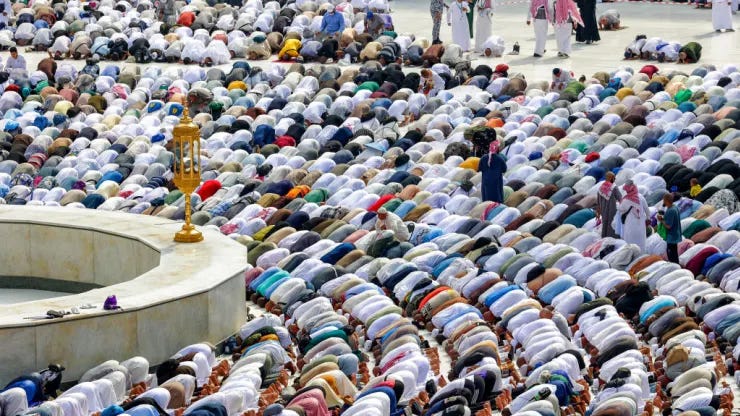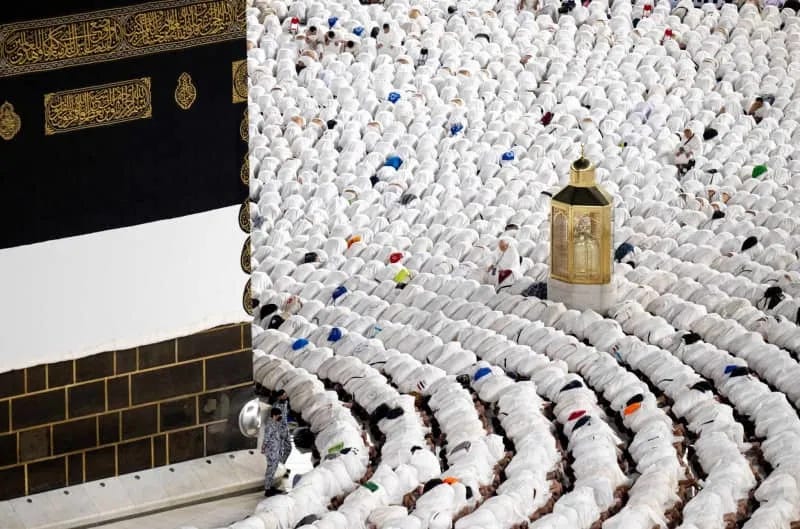Heat Claims Over 1,000 Lives During 2024 Hajj Pilgrimage
India has reported approximately 90 fatalities, while at least 658 Egyptian pilgrims were reported dead, 630 of whom were unregistered.

Record-Breaking Heat Leads to Tragic Loss of Life
MECCA, Saudi Arabia — This year's Hajj pilgrimage has been marred by the tragic deaths of over 1,000 pilgrims, primarily due to an intense heat wave. Temperatures soared to a blistering 51.8°C (125°F), resulting in hundreds of heat-related fatalities among the estimated 1.8 million pilgrims gathered in Mecca.
Alarming Death Toll
According to multiple reports, the death toll stands at 1,081, with casualties reported across approximately 10 countries. An AFP tally indicates that over half of these were unregistered pilgrims who lacked access to air-conditioned facilities, exacerbating their vulnerability to the extreme heat.
Countries Most Affected
Egypt has suffered the most significant loss, with at least 658 Egyptian pilgrims reported dead, 630 of whom were unregistered. Other countries with high casualty figures include Indonesia (144 deaths), Jordan (60 deaths), Tunisia (35 deaths), and Iran (11 deaths). India has reported approximately 90 fatalities.
Strain on Medical Facilities
Saudi authorities have reported treating over 2,700 cases of heat exhaustion and heatstroke but have yet to release an official death toll. Comparatively, last year saw around 240 pilgrim deaths, predominantly Indonesians, underscoring the severe impact of this year’s heat wave.
Climate Change and Rising Temperatures
The Hajj pilgrimage, which follows the Islamic lunar calendar, has coincided with the peak of summer in Saudi Arabia in recent years. Climate studies indicate that temperatures in the region are rising by 0.4°C per decade, significantly increasing the risks associated with the pilgrimage.
Vulnerability of Pilgrims
The extreme temperatures pose a severe risk to pilgrims, especially the elderly, due to several factors including lack of acclimatization, the intense physical nature of the Hajj rituals, crowded outdoor conditions, and pre-existing health issues. Many of the deaths are still under investigation, but heat-related illnesses have been identified as the primary cause.
Historical Context and Future Implications
This year's tragedy echoes past incidents, such as the 2015 stampede in Mina that killed over 2,400 pilgrims. Saudi Arabia has invested heavily in crowd control and safety measures, but the sheer number of participants and increasingly harsh weather conditions make ensuring safety a daunting challenge.
Summing Up: Precautions for Future
The combination of extreme heat reaching 51°C, the physically demanding Hajj rituals, and the advanced age of many pilgrims has led to a devastating loss of life this year. The alarming death toll highlights the growing threat of climate change to the annual Hajj pilgrimage, necessitating urgent measures to protect the health and safety of future pilgrims.
If you believe this article would interest someone you know, please feel free to share it anonymously (for us), using any platform that you prefer.





